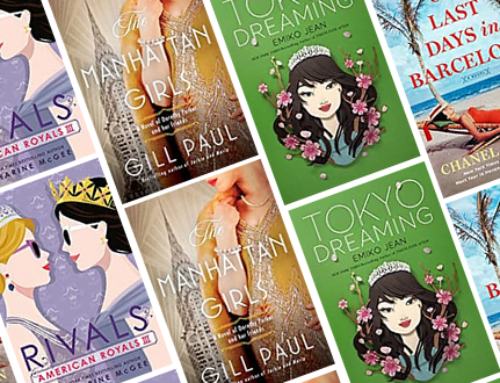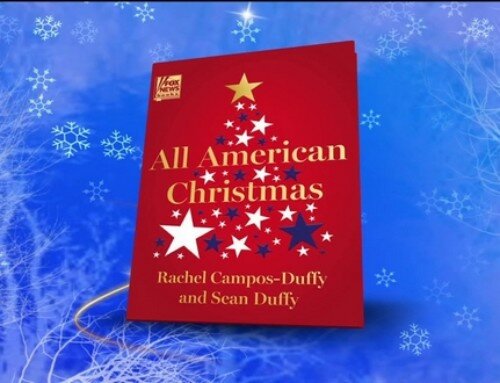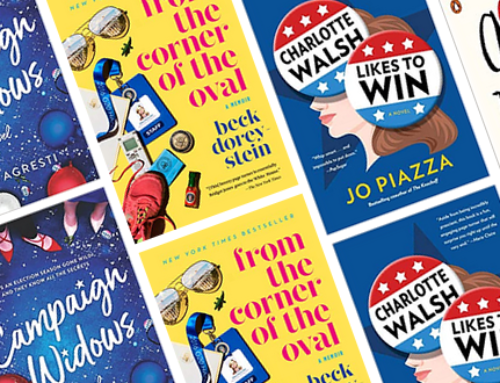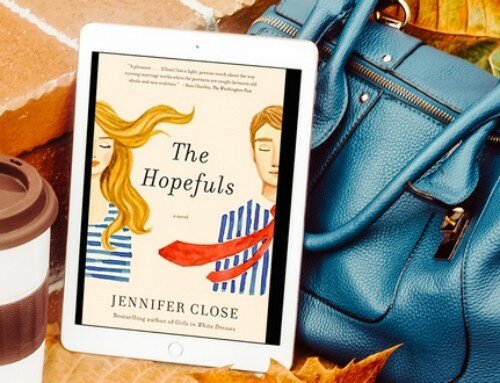Our favorite part of every month’s book club is the author interview! It’s so fun to talk to an author about their writing process, to get the hot gossip behind how they chose to have certain characters do certain things, and we sometimes get a sneak preview of what’s next for them.
Today, we’re so happy to share our author interview with The Women’s March author Jennifer Chiaverini, a force in the women’s historical fiction world.
What inspired you to write about the 1913 Suffrage Procession? Do you remember when you first learned about the procession?
The idea for The Women’s March first came to me in January 2017, soon after the Women’s March on Washington the day after the inauguration of the 45th president. When I read news coverage of the events, I was intrigued to learn that the Women’s March of 2017 had an important but nearly forgotten historical precedent. More than one hundred years earlier, thousands of women had assembled in the nation’s capital the day before the inauguration of President Woodrow Wilson to demonstrate on behalf of women’s suffrage. The organizers planned a beautiful, dignified parade from the Capitol down Pennsylvania Avenue past the White House, with elegantly costumed marchers, bands, equestrians, automobiles conveying dignitaries, and lavish floats depicting the history of the suffrage movement and celebrating women’s achievements. Five thousand marchers participated, making the 1913 Woman Suffrage Procession the largest political demonstration in the nation’s history to that point. It was witnessed by an estimated quarter of a million spectators, most of whom had come to Washington for the inauguration and were not sympathetic to the suffrage cause. Amid hostile crowds and negligent police, the march didn’t unfold as planned, but the women won respect and admiration for the dignity and determination they showed in the conflict.
Looking deeper, I discovered striking parallels between the Woman Suffrage Procession of 1913 and the 2017 Women’s March on Washington. In both centuries, the organizers faced daunting logistical obstacles as they brought their plans to fruition; participants were subjected to ridicule, harassment, and physical harm; disagreements occurred between factions with competing interests; and heated controversies erupted over the exclusion or marginalization of women of color. The differences between the two marches, defined by social and cultural changes spanning a century, were equally compelling. My imagination was captivated, so I decided to learn more about this momentous event and the people who took part in it, and to share their story with my readers.
I love a multi-POV novel, and I’m always intrigued by how authors decide which POVs to include for which segments of the story. Did you always know this would be a multi POV story? Which POV was the most challenging for you to write, research wise?
I’m always glad to meet someone who enjoys multi-POV novels as much as I do! Even before I began sketching the outline of The Women’s March, I realized that it would be crucial to explore the intersection of sex, class, and race that had so profoundly shaped the suffrage movement in the United States. I also knew that my narrators, whom I would choose from among the many remarkable women involved in suffrage campaigns of the time, must be strong, independent, courageous women who played significant roles in the procession. My first choice was Alice Paul, because as the director of the march, her perspective was absolutely essential to the story. The second to join my cast of characters was Ida B. Wells-Barnett, the renowned civil rights activist, journalist, and co-founder of the NAACP, who had adamantly insisted that the suffrage procession—and the proposed constitutional amendment itself—must include women of color. My third narrator was New Yorker Maud Malone, the daughter of Irish immigrants and an outspoken advocate for women’s and workers’ rights. Unlike Alice and Ida, whose achievements are deservingly studied and celebrated, Maud is, regrettably, little remembered today. She proved to be the most elusive of my narrators to research, since very little modern biographical material about her exists.
I found the character of Maud especially fascinating, since I am also a librarian. How did you first discover her–a lesser known suffragist compared to Ida and Alice. How did you decide that she would make a good character in this novel?
While tracing the history of suffrage marches, I learned that the first street parade for women’s suffrage in the United States took place in New York City in February 1908, and it was organized by the Irish-American leader of the Harlem Equal Rights League, Maud Malone. The authorities had tried to quash the demonstration before it began by denying her a permit, but Maud and more than two thousand supporters gathered at Union Square to march anyway. When the police warned her that it was illegal to parade without a permit, she agreed to suspend the march. Instead, she cheerfully explained, the group would leave the area and simply walk, not parade, up Broadway to the meeting hall where they had arranged to hold a rally. They didn’t chant or sing or shout slogans as they strolled along their original parade route, but every onlooker knew who they were and why they were there, so their suffrage march happened after all.
Maud’s cleverness and cheerful good humor under pressure delighted me, and I immediately began combing through newspaper archives hoping to learn more about her activities. I found an editorial that derided her for marching around the capitol building in Albany—a “Saffron Parade of One,” one writer mocked her, referring to the bold color of the poster pinned to her dress—and then another article that disparaged her as a “militant suffragette librarian,” but to me, the insults only made her seem more sympathetic and likeable. Although other suffragists are far better known today, in the early twentieth century, Maud was famous—or notorious, rather—for organizing outdoor suffrage rallies, boldly challenging presidential candidates at their campaign events, provoking her own arrest to draw attention to the cause, and passionately advocating for the rights of workers, and working women in particular. I’m so glad I learned about her, because her voice and perspective turned out to be immeasurably important to the story.
I have to ask, do you have a favorite suffragist? Or a lesser-known suffragist that you would love to learn more about?
I confess I can’t even choose a favorite from among my three narrators, much less from among the vast number of suffragists who fought for the cause through the years! And that brings up a very important point—winning the vote was never the triumph of a single women, or a single organization, even one as influential as the National American Woman Suffrage Association, the group primarily responsible for the Suffrage Procession. The success of the suffrage movement spanned generations and required the dedicated effort of countless thousands of people of different races, classes, and political affiliations. The victory belongs to all of them, even though many did not live to see it.
Women of color have often been written out of the story of suffrage, something your book works to combat. Do you think, going forward, we will see more and more reflections on the role people of color played in historical movements?
I hope so, and I believe we will. The significant roles that people of color have played in American history too often have been deliberately omitted from the narrative, and a correction to the historical record is long overdue. In addition to stories about people of color, however, we also need more stories by people of color, especially in this crucial moment in our nation’s history. It’s heartening to observe many publishers and editors actively amplifying the voices of Black, Asian-American, and other minority authors, but I think they’d be the first to agree that more work needs to be done.
How did you initially get interested in writing historical fiction? What is it that continues to appeal to you about the genre?
I’ve wanted to be a writer ever since I learned to read, and many of the books I read in childhood sparked my interest in history, so it seems happily inevitable that I would embrace historical fiction as an author. For me, one of the great joys of writing historical fiction is the opportunity to bring little-known or forgotten historical figures to the forefront of the story. Women and people of color, especially, have too often been relegated to the margins and footnotes, if they make it into the historical narrative at all. I love introducing readers to courageous, extraordinary people that haven’t always been given the recognition they deserve, and allowing readers to witness transformative events in world history through their eyes.
What do you like to read for leisure? Do you have a favorite book that you’d recommend for readers who love historical fiction?
I delve into a lot of history and biography when I’m researching a new novel, but when I read for pleasure, I prefer historical fiction. That said, I’d never limit myself to a single genre, not when there are so many wonderful books of all kinds just waiting to be discovered!
The best historical novel I’ve read recently is The Women of the Copper Country by Mary Doria Russell. Russell is a masterful storyteller, and her account of the Calumet, Michigan copper mining strike of 1913 is absolutely riveting. Led by twenty-five-year-old, six-foot-one “Big Annie” Clements, a miner’s wife, the miners demand better wages and safer working conditions after terrible injuries and gruesome deaths become commonplace. Russell’s eloquent prose, flawless use of period detail, and fully realized characters bring the harrowing historical events and their shocking aftermath to life. If you enjoy historical fiction, do yourself a favor and read every one of Mary Doria Russell’s novels.
What would be your #1 recommendation or piece of advice for people who want to write historical fiction?
I wholeheartedly believe that authors of fiction—not only of historical fiction, but across all genres—must first and foremost be passionate, voracious readers. Reread the magical books you read in childhood that sparked your love for stories and inspired you to become a writer. Ask librarians and independent booksellers for recommendations, their favorite books of all time and the best new books they’ve read recently. Read outside of your usual genres. Most importantly, think about what you read. What did you absolutely love about a particular book or story? What left you utterly indifferent? Why, and how? Read not to criticize but to discover. Wholeheartedly embrace your community’s literary culture. Attend touring authors’ events and buy their books, especially if they’re presenting their debut novels. You’ll want aspiring writers to do the same for you someday.
What’s a time period you’ve never written about but would love to write about?
It might surprise you to learn that curiosity about a particular time period has never sparked a new novel idea for me. My inspiration has always come from discovering a particular historical figure or event that intrigues me, and after that, I delve into the era in which that person lived or the events took place. In my writing process, characters and events always come first, and the setting follows—that’s how it’s worked so far, anyway!
What’s next for you writing wise? Do you have another book on the docket soon?
My next novel, Switchboard Soldiers (William Morrow, 2022), tells the story of the courageous young women who served as telephone operators in France with the United States Army Signal Corps during World War I. At that time, telephones were the most important means of communication between US Army headquarters, Allied outposts, and troops in the field, and these telephone operators were absolutely essential to the war effort. Their perseverance, courage, skill, and dedication not only helped the Allies achieve victory, but also convinced a skeptical American president, Congress, and public that women too deserved the right to vote. Having bravely accepted the responsibilities of citizenship, they had proven themselves worthy of a citizen’s fundamental rights. The valiant women of the U.S. Army Signal Corps broke down barriers and cleared the way for generations of women who would follow after, not only in the military, but in all aspects of public and professional life.
Future Female Leaders is a participant in the Amazon Services LLC Associates Program, an affiliate advertising program designed to provide a means for us to earn fees by linking to Amazon.com and affiliated sites.












